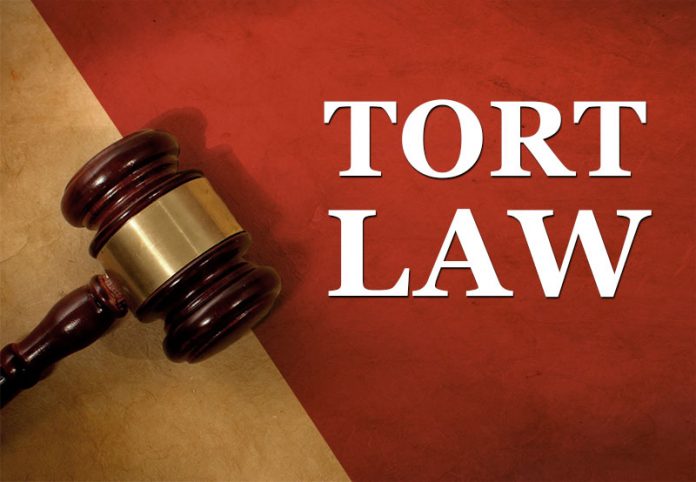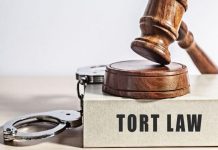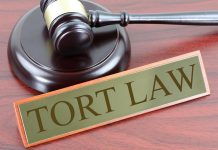This article has been written by Ria Verma, a student at Symbiosis Law School, NOIDA. This article aims to critically analyze the pigeon hole theory and distinguish it from the other theories of general principles of liability.
Table of Contents
Introduction
We witness a wide range of common phenomena in our day-to-day lives- an article in a magazine or a newspaper that lowers the reputation of an individual in the eyes of others, wrongful imprisonment of an innocent to deaths caused by potholes because of the negligence of the authorities.
It is a difficult task to give one particular objective of the law of torts when a wide number of situations come into its purview. In a society, conflicts of interests arise and can threaten to cause or cause damage to others in the form of injury to reputation, conversion of property, injury to a person, etc.
The area of law penalizes individuals for ‘socially unacceptable’ behavior, or behavior that deviates from an established code of conduct, and causes harm to an individual or a group of individuals. The aggrieved party can file for damages or an injunction, as applicable in a particular case.
The primary objective of the law of torts is to give compensation to the victims or the family of the victims. Deterrence, that is, preventing other individuals from committing the same act or omission, is also one of the primary objectives of the law of torts.
Damages are awarded to the plaintiff to restore him to the position before the tort occurred. The injury caused would be inclusive of any injury to the plaintiff’s reputation, reduced earnings, mental agony, etc. Depending upon the facts and circumstances of the case, the conduct of the defendant and the injury suffered by the plaintiff is scrutinized. A proportionate amount of monetary compensation is then awarded to the plaintiff as damages.
A very recent example of the Astroworld tragedy is an excellent example of what could be considered a tort. The organizers and performers of the event have been sued for gross negligence, breaching their duty to provide a safe environment and to hire sufficient medical personnel. The lawyer representing the 125 victims of the tragedy has filed for damages as high as $750 million.
There has been a never-ending dispute on whether certain offenses and wrongful conduct come under the law of tort or law of torts. Lawyers have often used the words “tort’ and ‘torts’ interchangeably whereas some think that the difference in terminology is quite significant.
The difference in the usage of letter ‘s’ provides quite a crucial point of view. It distinguishes between the theories given by two eminent jurists John Salmond and Percy Henry Winfield.
Essentials of a Tort
An act or an omission
The very first essential for classifying wrongful conduct as a tort is the commission of an act or the omission from committing an act. There must be a duty to that which has been breached or in certain circumstances, it can be established that a reasonable man would have behaved differently.
For example, in the case of Haley vs. London Electricity Board, (1965), a pit was dug on the road by the defendant to install an electric wire. They had taken permission from the authorities to do so and also took precautions to ensure the safety of the passersby. However, the notice board was adequate for people with general eyesight. The plaintiff, in this case, a blind man, fell into the pit and suffered severe injuries as a result of the fall. It was held by the Court that the defendants were liable for committing the tort of negligence. The precautions were not in the interests of all the passerby but only the passerby with general eyesight. The plaintiff was awarded damages accordingly.
Therefore, the defendant is not judged against the criteria of what’s expected of him, but against the yardstick of a prudent and reasonable person. In this way, the idiosyncrasies of the defendant are eliminated.
On the other hand, ignoring the cries of the victim of a car accident as there exists no legal duty as such. It is merely a moral obligation to ensure the safety and well-being of all the individuals in our vicinity.
Legal damage caused
The defendant has committed an act that breached a duty owed by him. But this duty must subsequently have caused damage to the plaintiff, or the plaintiff’s legal right must have been infringed. Two legal maxims would help shed more light on what types of damage or losses could be incurred by the plaintiff.
Injuria sine damnum
“Injuria” refers to interfering with the plaintiff’s enjoyment of his legal rights without any competent authority to do so and “damnum” refers to the losses suffered by the plaintiff, for example, discomfort, injury, monetary loss, etc. Even if no harm is caused to the plaintiff, the mere violation of their legal right is sufficient as a cause of action.
In the landmark judgment of Ashby v White (1703), the plaintiff went to vote for the parliamentary elections but was wrongfully detained by a returning officer. As a consequence, his right to vote was violated. For every right, there is a remedy. The plaintiff initiated a lawsuit against the defendant for violating his legal right.
In a similar case, an MLA was wrongfully detained by a police officer. The plaintiff was unable to attend the assembly. The Court accordingly observed exemplary damages of Rs 50,000 to the plaintiff.
Damnum sine injuria
This legal maxim refers to injury caused to the plaintiff without the injury infringing on his legal right. For example, a defendant sets up a restaurant in front of the restaurant of the plaintiff. The plaintiff suffers monetary damage as there is a decrease in the customers that buy the products. Even if the act is considered morally wrong, the defendant has not violated any right of the plaintiff therefore, the plaintiff is not entitled to receive any remedy.
Theories of general principles of liability
The basic principle of ascertaining the liability of the wrongdoer is based upon two major theories:
- Pigeon Hole Theory- According to this theory, several unidentified offences and wrongful conduct would not come under the purview of liability in tort law.
- Wider and Narrower Theory- According to this theory, the wrongs committed by the party which is not in the interests or injure the other party would come under the purview of tort law without the requirement of a legal justification.
Pigeon hole theory
According to Salmond, “Tort is a civil wrong for which the remedy is a common-law action for unliquidated damages, and which is not exclusively the breach of contract, or, the breach of trust, or, other merely equitable obligation.”
The entire pigeon-hole theory laid down by Salmond seeks to answer two questions-
- Should the law of torts be restricted to the torts that strictly fall within its purview?
- Should every act deemed wrongful and committed without any justification, be classified as a tort?
According to Salmond, no single principle can be applied to ascertain the liability of the wrongdoer. Only well-defined wrongs should be considered as tort and confined within a small box known as a pigeon hole. He compared the domain of tort to that of a pigeon hole with a number of smaller holes. These smaller holes would represent assault, slander, battery, malicious prosecution, and all the recognized wrongs. He was against having a general approach to the law of tort. A remedy would be available for only those wrongs which would fall under the established torts and the burden of proof would be on the plaintiff to establish that the wrong would come under the ambit of a specific, identified tort. If a wrong would not be a part of any of these holes, no claim could arise.
Supporters of the pigeon hole theory
Dr. Jenks supported this theory and explained that it would not restrict the courts from creating new torts; rather, the new torts would need to bear similarity to the already existing ones.
A similar view was held by Heuston. He believed that there was an error in interpreting the theory. Salmond never intended to classify the law of torts as a closed and expansible system. It does not mean that the pigeon holes are not abundant and they may not be added to.
Dr Glanville Williams supported the theory and stated that classifying torts into pigeon holes should not be interpreted as pigeon holes not having enough space for all the wrongs or not being expandable.
Criticism of the theory
The theory was heavily criticised on the grounds that many new torts existed that had not been legally recognized and were not in any way similar to those already in existence. It has also been criticized due to confining the scope of the law of torts. In the modern-day world, the number of wrongs is increasing at an exponential rate. In the case of Chapman v Pickersgill (1762), Pratt C.J. held that torts are infinitely many and are not confined or limited to any extent. In Pasley v Freeman (1789), the tort of deceit was legally recognized. The doctrine of strict liability was established in Rylands v Fletcher (1868) and the tort was not substantially similar to any tort in existence
The case of Donoghue v Stevenson (1932) is self-explanatory. A complaint was lodged by the plaintiff after finding a snail at the bottom of the ginger beer she had purchased. Being an injury that could not be reasonably foreseen, the owner was not held liable; rather, it was the manufacturer who was liable for his negligent conduct. The neighbour rule and laws on the rights of the consumers were formulated after the case. The tort of negligence was shaped because of the landmark judgment. In Furniss v. Fitchett (1958), Barrow C.J. stated that the well-known traditional torts do not emanate from an all-embracing general principle ascertaining tortious liability. In Rookes v Barnard (1964), the tort of intimidation was identified. Most importantly, the landmark judgment of MC Mehta v Union of India (1986) wherein the Supreme Court of India propounded the concept of ‘absolute liability.’
The courts have explicitly or implicitly, set aside the pigeon hole theory propounded by Salmond due to its confining nature. There is no scope to incorporate or create new torts. The plaintiff would further suffer as he would be stripped of having a right to take action against the wrongdoer in a court of law.
If we go by the pigeon hole theory, it would be difficult to address the needs of the people and the legislative framework that needs to be formulated on an urgent basis would be dismissed on the ground that the wrong has not been recognized previously. Would the injury cease to exist because there is no established wrong? The answer to this question would be no.
Winfield’s take on tortious liability- opposing pigeon hole theory
Winfield, an influential legal scholar referred to torts as “tortious liability arises from the breach of a duty primarily fixed by law, this duty is towards persons generally and its breach is redressable by an action for unliquidated damages.” In simpler words, he considered tort as a breach of duty the remedy to which would be given in the form of unliquidated damages, that is, damages awarded for breach of contract that arises from causes that are not reasonably foreseeable.
He interpreted a tort as an injury caused to another individual with no justification by the pre-existing laws of the land. He believed in a single category of tort which would accommodate newer torts as well unlike Salmond’s theory and establish a general principle of liability. The remedy would be given to the unidentified wrongs as well.
As opposed to Salmond, Winfield’s theory also supported the creation of new torts by the courts of law. In Ashby v White (1703), Holt CJ stated that if a man has multiple injuries, the actions that can be taken must be multiplied as well since every injured man has the right to compensation. Justice Bhagwati in MC Mehta v Union of India (1986) opined that there is a need to evolve the existing principles and lay down norms addressing newer issues arising from a heavily industrialized economy. The understanding and thinking of the courts must not be restrained and new jurisprudence must be created.
Therefore, we can observe that Winfield’s theory was quite broad and was the total opposite of what Salmond has proposed. It was also widely accepted by the courts of law implicitly.
However, a significant observation was made by Winfield wherein he stated that Salmond’s theory would suffice to provide a narrower look in a similar manner to how a tree is treated as ‘inanimate’ for the purposes of avoiding a crash but would be classified as animate because it has grown from a sapling and continues to grow.
Prima facie tort theory
The prima facie theory was proposed by Pollock and Holmes at the later stages of the 19th century. They proposed that intentionally inflicting injury without any reasonable or legal justification would be considered as an actionable cause even if the injury does not fall under the purview of an already established wrong. This theory also opposed the main proposition of Salmond’s theory.
They classified tort into three categories. First, where intentional conduct was the cause of action. Second, negligent conduct is the cause of action, and third, cause of action emanating from the principle of strict liability.
Holmes perceived the theory as not taking another intentional tort within its ambit but a general principle for ascertaining liability in cases of intentional harm. To draw a comparison, Salmond’s theory aimed to provide remedies for those torts that have been identified whereas Winfield’s theory incorporated new torts with the passage of time.
The Supreme Court of Mexico in the case of Schmitz v Smentowski,(1990) also provided certain elements of the prima facie tort theory that must be fulfilled to ascertain liability:
- Commission of an intentional lawful act by the defendant
- Intentional act to cause injury
- The plaintiff being injured as a result of the commission of the act
- No legal or valid justification
These elements were perceived as the general requisites for ascertaining liability in tort cases. The plaintiff can plead prima facie tort on the establishment of these requisites and there is no need to analyze the traditional tort in one of the pigeon holes.
Therefore, both Winfield’s theory and the prima facie tort theory opposed Salmond’s restrictive pigeon-hole theory and encouraged the expansion of torts.
Conclusion
The law of torts is uncodified and emanates from precedents. It is heavily dependent on the facts and circumstances of each case that is brought under it. The pigeon-hole theory and the prima facie tort theory can be considered as two faces of the same coin.
The pigeon-hole theory might have been relevant in its time but with the expanding interpretation of the courts, it finds no room in the courts of law today. The debate around ‘tort’ and ‘torts’ is endless but the Supreme Court in the case of Jay Laxmi Salt Words Ltd vs State Of Gujarat (1994) stated that it is unthinkable to limit the law of torts considering that it is still in its development stages.
Today, there is no restriction to technological advancements and several issues have come up such as the applicability of autonomous systems to vicarious liability. The law of torts is expanding at an exponential rate with an increase in the number of people aware of their rights and initiating lawsuits against the wrongdoer. There exists a possibility that even more branches could be added to the tree of negligence. Therefore, it is imperative to view the domains of torts as the law of torts and resolve the new, emerging issues of the era by providing an adequate remedy to the victims.
References
- https://www.lawcolumn.in/winfields-theory-and-salmonds-pigeon-hole-theory-of-tortious-liability/
- https://lawcorner.in/pigeon-hole-theory-under-law-of-tort/
- https://www.oup.com.au/__data/assets/pdf_file/0021/140880/BARKER_9780195572391_SC.pdf
Students of Lawsikho courses regularly produce writing assignments and work on practical exercises as a part of their coursework and develop themselves in real-life practical skills.
LawSikho has created a telegram group for exchanging legal knowledge, referrals, and various opportunities. You can click on this link and join:
https://t.me/joinchat/L9vr7LmS9pJjYTQ9
Follow us on Instagram and subscribe to our YouTube channel for more amazing legal content.
 Serato DJ Crack 2025Serato DJ PRO Crack
Serato DJ Crack 2025Serato DJ PRO Crack











 Allow notifications
Allow notifications



